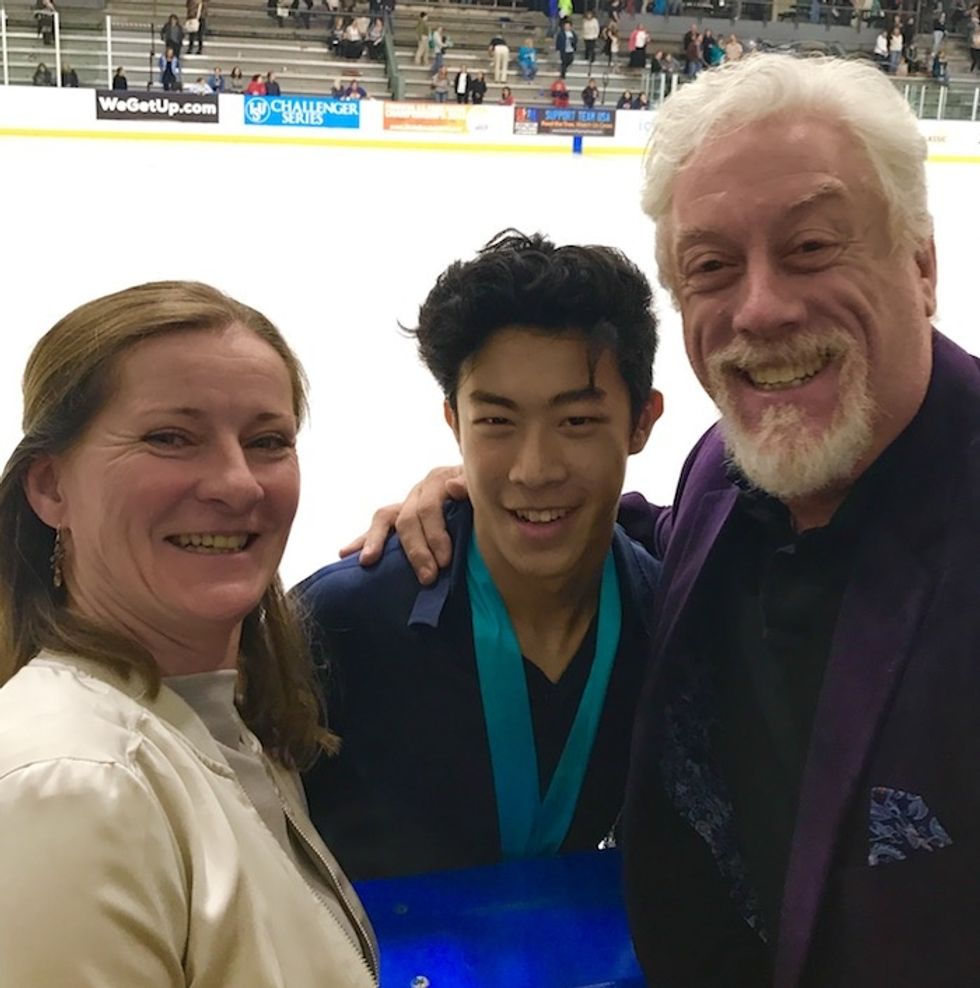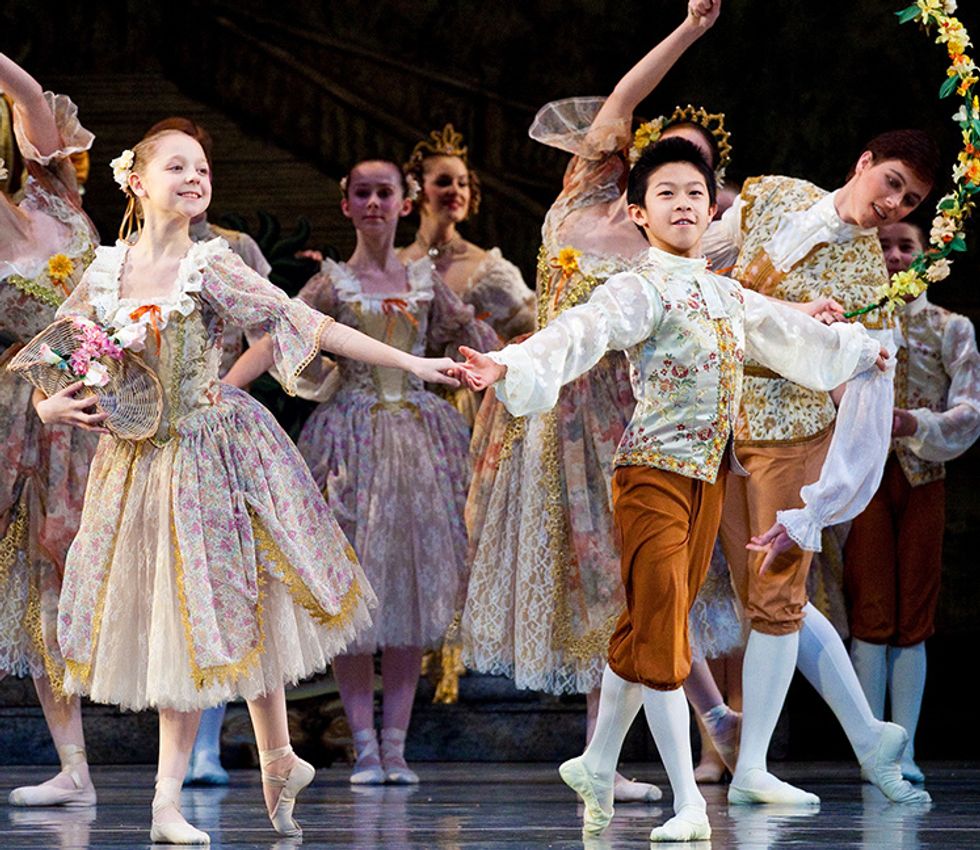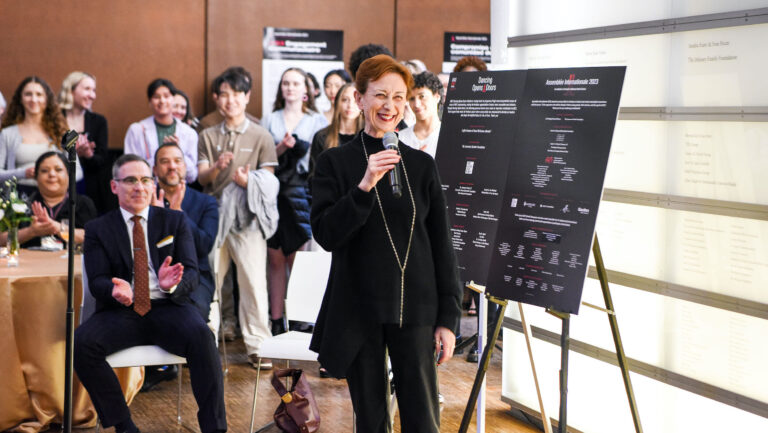
Soon after Nathan Chen began taking class at Ballet West Academy in Salt Lake City at around 8 years old, his natural ability was obvious. Especially to former director of the academy, Peter Christie, who taught Chen (even on the ice several times), and Jeff Rogers, who also taught Chen while he was in the young men’s program at the academy. Considering Chen’s unique potential and figure-skating goals, Christie and Rogers knew Chen obliged some special treatment. However, as teachers, they wanted to give Chen the same ballet education as every other student at the academy.
Christie and Rogers shared with DT how training Chen required finding a delicate balance with their instruction.
Dance Teacher: How did Nathan find Ballet West Academy?
Peter Christie: When Nathan first started taking classes, he’d already been skating, but his mom Hetty realized that dance needed to be ingrained in his training—to get him to a place where the ballet and the dancing would benefit his future and set him apart as a skater. When you’re watching skaters, you can tell when they haven’t had any dance training, particularly ballet. A lot of times you’ll have skating programs that will incorporate dance training in them, but it’s supplemental. Dance is an after-the-fact. “You’ve been skating for awhile, but you now need some dance classes to make your arms look better.” We all know as dance teachers the repetition and starting from an early age is what makes it become second nature and ingrained in the muscle memory. Nathan’s mom understood that.

Chen with Peter Christie, right, and former skating coach Evgeniya Chernyshova. Christie is now the Director of Outreach and Education at the Ballet West Academy. Photo courtesy of BW
DT: What was Nathan’s training schedule like?
Jeff Rogers: He took a lot of ballet classes. He was not just taking two classes a week.
PC: In terms of class schedule, he was like any other advanced student. He would be at the skating rink at 5 or 6 in the morning, go to school then come to the ballet school for several hours of classes, sometimes followed by rehearsals with the company. With his skating, he had very long days.
DT: Did Nathan have to unlearn any skating habits when he started taking ballet?
JR: To the best of my knowledge, skating training doesn’t want you to turn out.

Chen performing in Ballet West’s 2011 production of “Sleeping Beauty.” Photo by Luke Isley, courtesy of BW
DT: How have you seen his ballet training benefit his skating?
PC: Nathan approaches his performance differently on the ice compared to other skaters, whose focus is the next technical element. As dancers, when we’re doing a variation or performing onstage, you don’t do a trick and walk to a spot, then do another trick. Your phrasing and the in-between steps are just as important as the tricks—the artistry of connecting the steps. Nathan has watched and absorbed professional ballet dancers doing this in class and from backstage, filing it away for future purposes.
JR: You watch him skate, and he just moves and presents himself differently from other skaters.
PC: So much of ice skating is solitary, so another benefit of ballet is the group-class setting, which is a different way of learning. You can focus on your training, but still be with other people. That socialization contributed to Nathan’s training and success. Through the years, he’s developed close and natural friendships at Ballet West, which he still maintains.
JR: In our young men’s program, it’s a group of men feeding off of each other. The competition within the group of dancers was strong and good.
DT: As dance teachers, did you approach Nathan’s training differently from other students?
PC: We approached his training as a ballet dancer. One difference with skaters is they tend to train on one side. All of your routines and jumps, etc., tend to reemphasize that one side, where with professional ballet training you do everything on both sides. You tour to the right, you tour to the left. Nathan really kicked in that mode of balancing the body and muscles with his ballet training.
JR: Because he is so balanced, he’s staved off injury, for the most part. Periodically after class, Nathan and I will talk about the correct hip placement or posture from class. He’s a dancer while he’s out there skating, and that’s what makes him so unique. But we never made accommodations in class. We never said: “Oh, because you’re a skater, you don’t have to do this.” When he was in ballet class, he was 100 percent a ballet dancer. His ability to compartmentalize was the quality that made him good at both.
DT: Has Nathan’s presence changed how you teach?
PC: When Nathan came to Ballet West, we saw that this was a potential for us to reinstate the dance and figure-skating connection. Typically, with our students we try to enforce the potential of a ballet career. But with Nathan, although he probably could have a ballet career with his dedication and talent, we understood that we’d have to make accommodations with respect to timing and accessibility. We understood that skating was his primary goal, and establishing curricula that complimented his skating training. But with all the recent exposure and people seeing how dance benefits skating, we get phone calls from skaters all the time seeking dance instruction.
DT: What advice would you give dance teachers coaching or teaching figure skaters?
PC: You have to be meticulous of how you put your class together.
JR: It took a lot of homework, on my part, to understand the parallels between skating and ballet. I started watching hours of skating videos, which led me to videos that emphasized, primarily by the Russians, the combination of incorporating ballet with gymnastic and figure-skating training. What really separated Russian athletes from American athletes was the refinement in the transition movements. So, you have to do your homework. The responsibility of the dance teacher is important.




